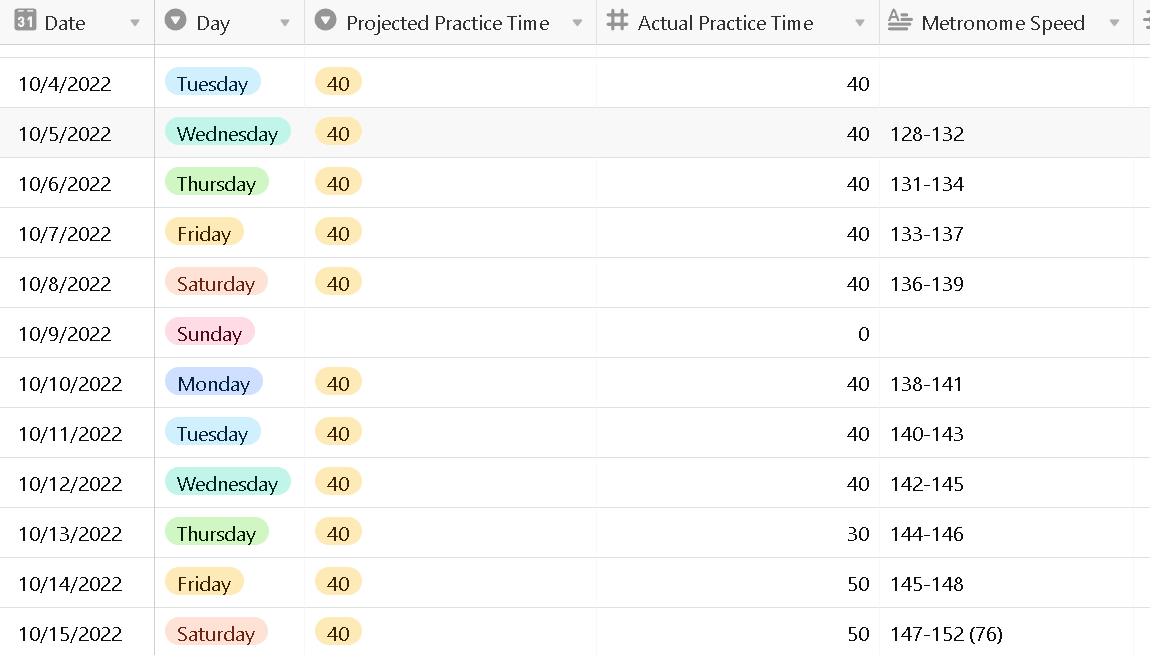Metronomes are often dismissed by most guitar players as an unnecessary tool, many of whom have either casually learned how to use it for their practicing or not at all.
I think the main aversion people have towards the metronome arises out of the realization that metronomes demand perfection out of players and more frustratingly reveal imperfections and errors in ones timing.
You really can’t refute a metronome because unlike you (the player), the metronome does not make mistakes.
I have had students who were in such denial that they actually came to the conclusion that the metronome itself was in fact broken and it was not them who was falling out of time.
Needless to say I quickly discovered that it wasn’t the metronome that was broken.
Why Use A Metronome?
The metronome is an invaluable tool that helps you develop you own internal metronome.
It also improves your ability to play in time, which is imperative especially if you want to play in a band. The trick is to know when to use a metronome and how to use it.
A common mistake beginners make starting out with a metronome is they set the tempo too fast.
This can cause guitar students to develop bad habits and to give up because they soon find that it’s too difficult for them.
When using a metronome or performing a particular exercise you should always start at a slow tempo, this allows you to develop your technique prior to increasing the speed.
Make sure you can perform the exercise at slower speed before increasing it. When you do increase the speed increase it by 5 BPM at the most.
Start Slow…Then Pick Up Speed

Most students overestimate their ability to play a new guitar practice exercise in time at a fast tempo. They’re impatient and want to start playing fast right away.
This causes bad habits to develop.
Practice at a slow tempo until you feel comfortable enough to increase the tempo a notch.
Then make sure you can perform the exercise cleanly at that faster tempo before proceeding.
Learning the exercise at a slow tempo is often fairly easy at first until you reach a plateau and your fingers are simply not ready to play it faster.
A good practice is to record your progress and your maximum speed for a period of time. Keep practicing making small increases until you reach the desired speed.
Don’t practice only at your current max speed however. Instead start at a slow tempo to warm up. Play the exercise for maybe ten minutes.
Then start gradually increasing the speed before returning to what your max speed.
After a few minutes of playing at your max speed attempt to increase the tempo for a few minutes.
Sometimes you may find it to be too difficult or too fast so you’ll have to reduce the tempo. Be flexible but persistent.
Don't be afraid to come back at it the next day.
Practice Without The Metronome
Remember it’s very important that you warm up at a slow speed first.
It can be detrimental to your progress if you begin at a speed that is too fast for your fingers to handle and can also cause injury and bad habits to develop.
Your initial speed isn't an accurate indication of your playing ability.
Secondly, for your guitar practice routine don’t always use a metronome. You don’t want to become dependent on a metronome for rhythm.
It’s more helpful as an aid in the development of your technique, but you'll want to develop an internal sense of rhythm as well.

Beneficial to me as a beginner on the guitar. Thanks
Hi Tomas,
Great article and your statement is so true that metronomes demand perfection out of players and more frustratingly reveal imperfections and errors in one’s timing. I use metronome mostly to check the difference between where I’m at and where I want to be, tempo-wise. I might check myself against it, to see if I’m pausing or slowing down anywhere that I shouldn’t be.
Keep up the good work.
Cheers!
Thanks Thomas. – Tomas